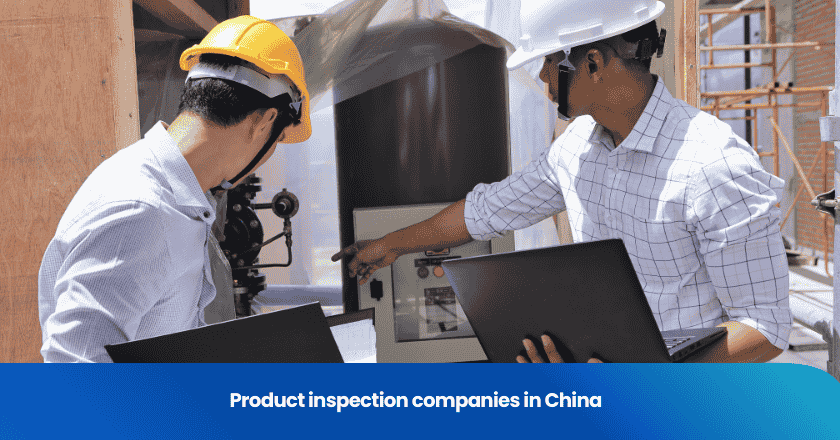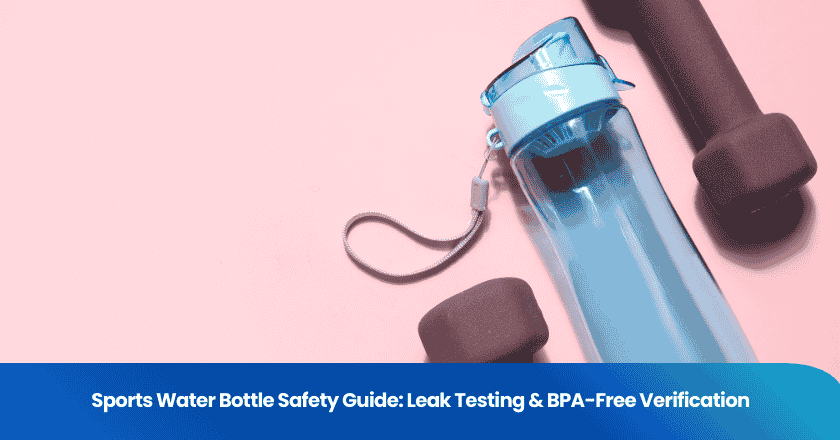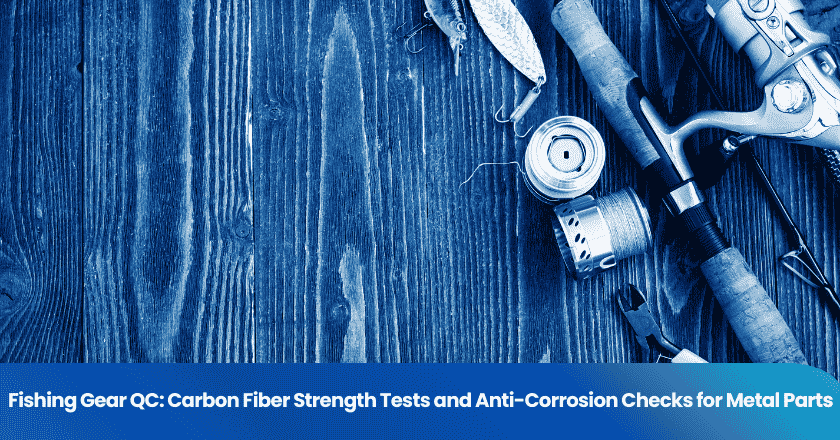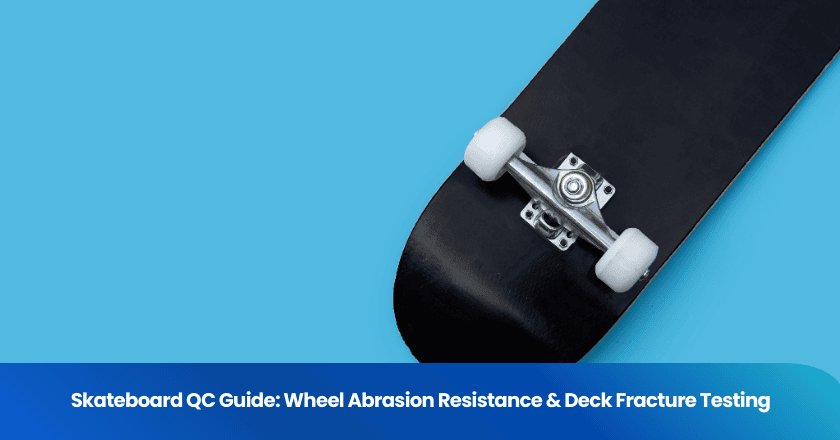
Product inspection companies in China help importers safeguard their supply chains. These firms deliver independent product inspection and enforce strict quality control standards. Many buyers face challenges when sourcing from China. They want reliable partners who understand local manufacturing and can reduce risks. Choosing the right product inspection companies in China ensures consistent product quality and smooth transactions.
Key Takeaways
- Product inspection companies in China help buyers ensure product quality and avoid costly mistakes by checking goods at different production stages.
- These companies offer various services like pre-production checks, in-production monitoring, pre-shipment inspection, loading supervision, factory audits, and product testing.
- Choosing the right inspection company means looking for experience, good reputation, a wide range of services, and industry knowledge to match your product needs.
- Clear communication with inspection companies and suppliers improves inspection results and helps solve quality issues quickly.
- Regular inspections protect your brand, reduce risks, and build stronger relationships with suppliers for smoother sourcing from China.
Product inspection companies in China
Role in China sourcing
Product inspection companies in China play a vital role in the global supply chain. Many importers rely on these inspection companies to verify product quality before goods leave the factory. A third-party inspection company provides an independent assessment, which helps buyers avoid costly mistakes. These companies understand local manufacturing practices and can identify potential issues early. By using a third-party inspection, buyers gain confidence in their sourcing decisions. China inspection service providers offer expertise in various industries, ensuring that products meet international standards. Inspection companies also help bridge the gap between overseas buyers and Chinese suppliers. Their presence on the ground allows for real-time quality inspection and immediate feedback. This proactive approach reduces the risk of receiving defective goods and supports long-term business relationships.
Why quality control matters
Quality control stands at the core of successful sourcing from China. Without proper quality inspection, buyers face risks such as non-compliance, safety hazards, and customer dissatisfaction. Product inspection companies in China deliver third-party inspection services that focus on every stage of production. These services include pre-production checks, in-process monitoring, and final product inspection. A third-party inspection company ensures that each batch meets the buyer’s specifications. Consistent quality inspection helps maintain brand reputation and reduces the likelihood of returns or recalls. China inspection service providers use detailed checklists and testing protocols to verify product quality. Their expertise in quality control allows buyers to focus on growing their business. Inspection companies act as a safeguard, ensuring that only compliant products reach the market. Effective quality control leads to fewer disputes and greater trust between buyers and suppliers.
China inspection service types
Pre-production inspection
Pre-production inspection takes place before manufacturing begins. Inspectors review raw materials, components, and production plans. They verify that suppliers use the correct materials and follow buyer specifications. This step helps prevent issues later in the process and supports effective quality inspection from the start.
In-production inspection
In-production inspection occurs during manufacturing. Inspectors visit the factory to check product quality at different stages. They monitor assembly lines and sample products for defects. This service allows buyers to identify problems early and request corrections before production finishes.
Pre-shipment inspection
Pre-shipment inspection happens when goods are ready for delivery. Inspectors examine finished products to confirm they meet quality standards and buyer requirements. They check packaging, labeling, and quantity. This final inspection reduces the risk of receiving defective or non-compliant goods.
Loading supervision
Loading supervision ensures that products are handled correctly during shipment. Inspectors oversee the loading process, verify container conditions, and confirm that the right goods are shipped. This service protects against damage and mix-ups during transportation.
Factory audits
Factory audits evaluate a supplier’s capabilities and compliance. Inspectors assess production facilities, management systems, and working conditions. Audits help buyers select reliable suppliers and maintain consistent product inspection standards.
Product testing
Product testing involves laboratory analysis and technical evaluation. Inspectors collect samples and perform testing services to verify safety, performance, and compliance with regulations. Product testing supports quality inspection and ensures that goods meet international standards.
Tip: Combining multiple china inspection service types provides stronger protection for importers. Each service targets a different stage of the supply chain and supports overall product inspection services.
Inspection companies: strengths and services
Key strengths
Inspection companies in China demonstrate several key strengths that make them valuable partners for importers. Their teams possess deep experience in quality control and understand the complexities of local manufacturing. Many inspectors have backgrounds in engineering or manufacturing, which allows them to identify issues quickly and accurately. Inspection companies maintain strict training programs for their staff. This ensures that inspectors follow international standards and best practices during every assessment.
Another strength lies in their ability to adapt to different industries. Inspection companies can handle a wide range of products, from electronics to textiles. Their flexibility helps buyers who source multiple product categories. These companies also provide rapid response times. They can dispatch inspectors to factories on short notice, which supports tight production schedules. Strong communication skills set them apart. Inspectors deliver clear, detailed reports that help buyers make informed decisions.
Note: Inspection companies act as a bridge between overseas buyers and local suppliers, reducing misunderstandings and improving product quality.
Service overview
Inspection companies offer a comprehensive suite of services designed to cover every stage of the supply chain. Their core services include pre-production inspection, in-production inspection, pre-shipment inspection, and loading supervision. Each service targets a specific phase of manufacturing or logistics. Factory audits and product testing add further value by verifying supplier capabilities and ensuring compliance with safety standards.
Clients benefit from customizable inspection plans. Inspection companies tailor their services to match the unique needs of each buyer. They provide detailed checklists, photographic evidence, and actionable recommendations in their reports. This approach helps importers maintain control over product quality, even from a distance. By offering a broad range of services, inspection companies support buyers in managing risk and achieving consistent results.
Choosing an inspection company
Selection criteria
Selecting the right third-party inspection company requires careful evaluation. Buyers should start by defining their specific needs for product quality and quality control. They must consider the type of products, the complexity of manufacturing, and the required inspection frequency. A reliable third-party inspection company demonstrates transparency in its processes. It provides clear documentation and communicates inspection results promptly. Buyers should request sample reports to assess the level of detail and clarity. They should also confirm that the company follows international standards for third-party inspection. A strong selection process reduces risks and ensures consistent product quality.
Tip: Create a checklist of your requirements before contacting any third-party inspection company. This approach helps compare options objectively.
Reputation and experience
Reputation and experience play a crucial role in the selection process. Buyers should research the company’s track record in third-party inspection. They can look for client testimonials, case studies, or references from other importers. Experienced companies understand the challenges of sourcing from China. They have handled various scenarios and can adapt to unexpected situations. A company with a long history in third-party inspection often delivers more reliable results. Buyers should verify the company’s certifications and memberships in industry associations. These credentials reflect a commitment to high standards in quality control and product quality.
Service scope
A comprehensive service scope sets a third-party inspection company apart. Buyers should review the range of services offered, such as pre-production inspection, in-production inspection, pre-shipment inspection, and loading supervision. Some companies also provide factory audits and product testing. A broad service scope allows buyers to address every stage of the supply chain. It ensures that product quality remains consistent from start to finish. Buyers should confirm that the company can customize its services to fit unique requirements. Flexibility in service scope supports better risk management and quality control.
| Service Type | Description |
|---|---|
| Pre-production inspection | Checks materials and plans before production |
| In-production inspection | Monitors quality during manufacturing |
| Pre-shipment inspection | Verifies finished goods before shipment |
| Loading supervision | Oversees loading and container conditions |
| Factory audits | Evaluates supplier capabilities |
| Product testing | Confirms compliance and safety |
Pricing factors
Pricing varies among third-party inspection companies. Buyers should request detailed quotes that outline all costs. Transparent pricing helps avoid hidden fees. Companies may charge per inspection, per man-day, or offer package rates. Buyers should compare pricing models and select the one that matches their budget and inspection needs. They must consider the value provided, not just the lowest price. High-quality third-party inspection often leads to fewer product quality issues and lower long-term costs. Buyers should also ask about additional charges for urgent inspections or travel to remote locations.
Note: Investing in thorough third-party inspection can prevent costly mistakes and protect your brand reputation.
Industry expertise
Industry expertise strengthens the effectiveness of a third-party inspection company. Buyers should choose a company with experience in their specific product category. Inspectors with relevant backgrounds can identify subtle defects and compliance issues. Industry expertise ensures that inspections address the unique challenges of each sector. For example, electronics, textiles, and toys each require different testing protocols. A company with broad industry knowledge can adapt its inspection methods to meet diverse requirements. This expertise supports better product quality and more accurate third-party inspection results.
Buyers benefit from working with a third-party inspection company that understands their industry’s standards and regulations.
Inspection cost in China
Pricing models
Inspection companies in China use several pricing models to serve international buyers. The most common approach involves a flat fee per inspection. This model offers clear cost expectations for each visit. Some companies charge by the man-day, which means the cost depends on the time inspectors spend at the factory. A few providers offer package deals for clients who need multiple inspections over a set period. These packages can help buyers manage costs for ongoing projects. In rare cases, companies may use a subscription model for frequent inspections across different suppliers.
Note: Buyers should always clarify the pricing structure before confirming any inspection service.
Cost factors
Several factors influence the final cost of inspection services in China. The location of the factory plays a significant role. Remote or hard-to-reach areas often require extra travel fees. The type and complexity of the product also affect pricing. Products with detailed specifications or strict compliance requirements may need more time and expertise. The number of inspection items and the sample size can increase costs. Urgent requests or inspections outside regular business hours may result in additional charges.
| Cost Factor | Impact on Price |
|---|---|
| Factory location | Higher travel expenses |
| Product complexity | More time and expertise |
| Inspection scope | Larger sample size |
| Urgency | Extra fees for rush jobs |
Budgeting tips
Effective budgeting helps buyers control inspection costs without sacrificing quality. They should plan inspections early in the sourcing process. Grouping multiple inspections in one trip can reduce travel expenses. Buyers can request detailed quotes and compare service providers to find the best value. Clear communication about inspection requirements prevents unexpected charges. Setting a realistic budget for quality control ensures that buyers protect their investment and maintain product standards.
Tip: Regular inspections may seem costly, but they often save money by preventing expensive quality issues later.
Working with inspection companies
Setting expectations
Successful collaboration with inspection companies begins with clear expectations. Buyers should define the scope of work before any inspection takes place. They need to specify product standards, inspection criteria, and reporting formats. This clarity helps both parties understand their responsibilities. Inspection companies rely on detailed instructions to deliver accurate results. When buyers outline their requirements, inspectors can focus on the most critical aspects of product quality.
A well-structured agreement prevents misunderstandings. Buyers should document all expectations in writing. This includes timelines, sample sizes, and acceptance thresholds. Regular updates keep everyone informed about progress. When both sides agree on the process, third-party inspection services become more effective.
Tip: Use a checklist to communicate your quality standards and inspection points. This tool ensures nothing gets overlooked during the inspection.
Supplier communication
Open communication with suppliers supports a smooth inspection process. Buyers should inform suppliers about upcoming inspections as early as possible. Advance notice allows factories to prepare and ensures that products are ready for review. Suppliers who understand the inspection process can cooperate more effectively.
Buyers should encourage suppliers to address any concerns before the inspection date. This proactive approach reduces delays and builds trust. Inspection companies often act as intermediaries between buyers and suppliers. They help clarify technical requirements and resolve questions on the spot. When all parties communicate openly, third-party inspection results improve.
- Notify suppliers of inspection schedules in advance.
- Share inspection criteria and product specifications.
- Encourage suppliers to ask questions or report challenges.
Note: Strong supplier relationships lead to better cooperation during third-party inspection and fewer production issues.
Reviewing reports
Inspection reports provide valuable insights into product quality. Buyers should review these documents carefully after each inspection. Reports usually include detailed findings, photographs, and recommendations. Buyers need to check if the products meet their specifications and quality standards.
Understanding the structure of an inspection report helps buyers make informed decisions. Key sections often include a summary of results, a list of defects, and suggestions for corrective actions. If the report highlights non-conformities, buyers should assess the severity and decide on next steps. Prompt feedback to the inspection company ensures that any issues receive immediate attention.
| Report Section | What to Look For |
|---|---|
| Summary | Overall pass/fail status |
| Defect List | Types and frequency of defects |
| Photos | Visual evidence of findings |
| Recommendations | Suggested corrective actions |
Tip: Keep a record of all inspection reports. Comparing results over time helps identify recurring problems and track supplier performance.
Handling issues
When inspection reports reveal non-conformities, buyers must act quickly. The first step involves discussing the findings with both the inspection company and the supplier. Clear communication ensures that everyone understands the nature of the problem. Buyers should request corrective actions and set deadlines for resolution.
Third-party inspection companies can assist by re-inspecting products after corrections. This follow-up confirms that the supplier has addressed all issues. Buyers should document every step of the resolution process. Keeping detailed records protects their interests and supports future negotiations.
- Review the inspection report and identify non-conformities.
- Communicate findings to the supplier and agree on corrective actions.
- Schedule a re-inspection if necessary.
- Update documentation to reflect the outcome.
Alert: Addressing issues promptly prevents shipment delays and protects product quality. Consistent follow-up with third-party inspection companies ensures long-term success.
Selecting the right product inspection company shapes the success of China sourcing. Key criteria include experience, reputation, service range, and industry expertise. Buyers should communicate expectations clearly and review inspection reports carefully.
Tip: Prioritize regular quality control checks to maintain compliance and protect your brand. Consistent oversight leads to fewer issues and stronger supplier relationships.
Quality control remains essential for any sourcing strategy.
FAQ
What is the difference between product inspection and factory audit?
Product inspection focuses on checking product quality at different production stages. Factory audit evaluates the supplier’s capabilities, management systems, and compliance with standards.
How often should buyers schedule product inspections in China?
Buyers should schedule inspections at critical stages: before production, during manufacturing, and before shipment. Regular inspections help maintain consistent product quality and reduce risks.
Can inspection companies provide certification services?
Inspection companies often offer certification services to verify compliance with international standards. These services help buyers meet regulatory requirements and improve market access.
What information should buyers provide before an inspection?
Buyers should share product specifications, inspection criteria, and timelines. Clear instructions allow inspectors to focus on key quality aspects and deliver accurate results.
How do buyers handle non-conformities found during inspection?
Buyers review the inspection report, communicate findings to the supplier, and request corrective actions. Scheduling a re-inspection ensures that all issues are resolved before shipment.
Grow your business with TradeAider Service
Click the button below to directly enter the TradeAider Service System. The simple steps from booking and payment to receiving reports are easy to operate.



